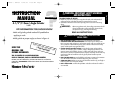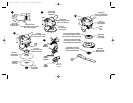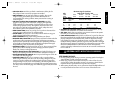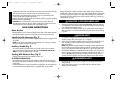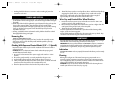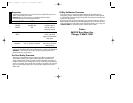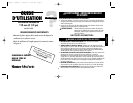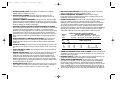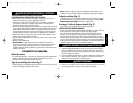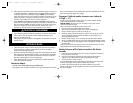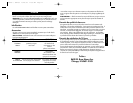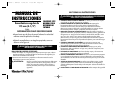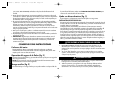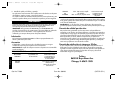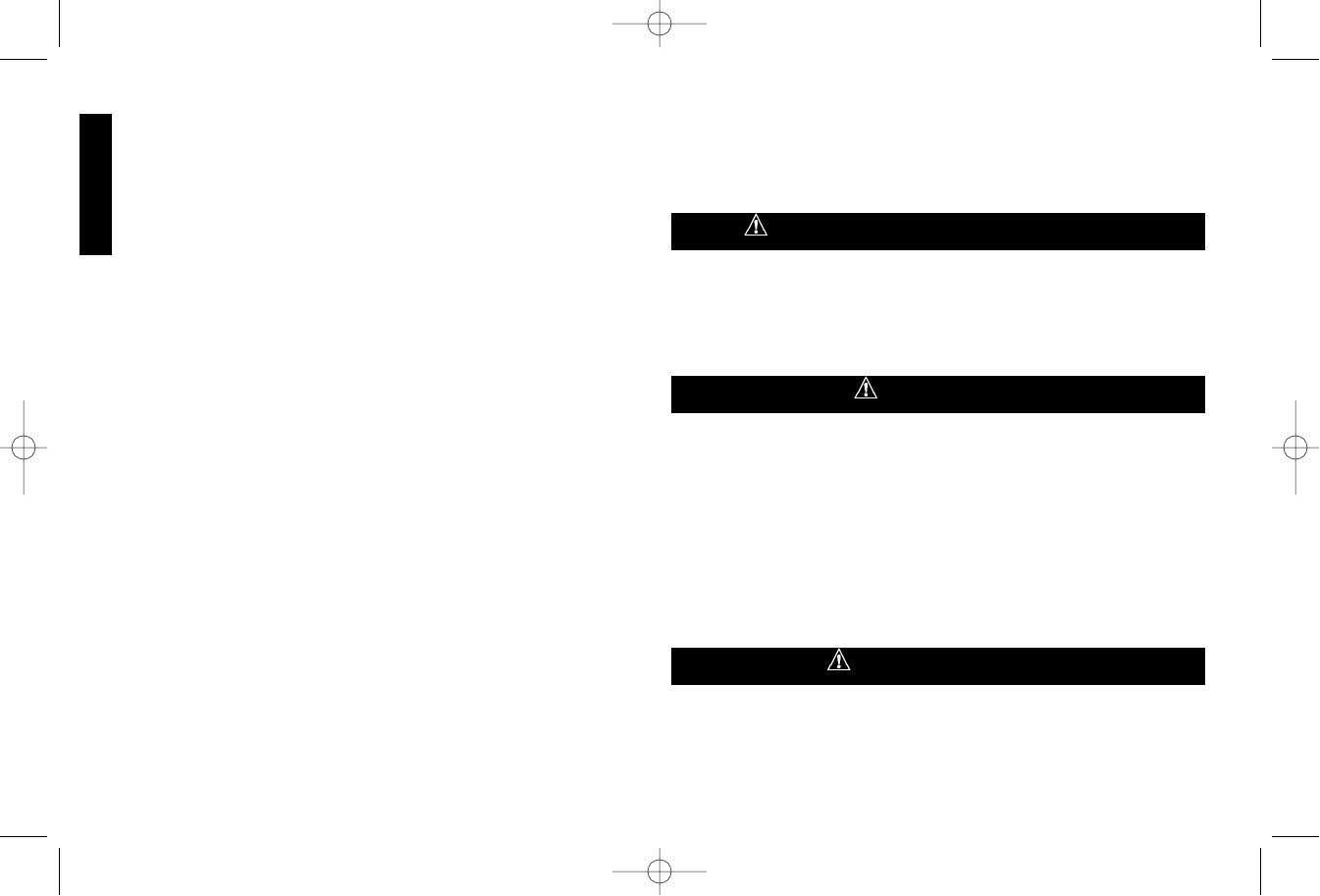
4
E NGLISH
undetected crack or flaw, it should burst in less than one minute. Never start the
tool with a person in line with the wheel. This includes the operator.
• In operation, avoid bouncing the wheel or giving it rough treatment. If this
occurs, stop the tool and inspect the wheel.
• Always use guards with depressed center wheels or flaring cup grinding wheels.
• Clean your tool out periodically.
• CAUTION: Some wood contains preservatives such as copper chromium
arsenate (CCA) which can be toxic. When sanding these materials extra care
should be taken to avoid inhalation and minimize skin contact.
SAVE THESE INSTRUCTIONS
Motor Brushes
Master Mechanic uses an advanced brush system which automatically stops the
tool when the brushes wear out. This prevents serious damage to the motor.
Spindle Lock Pin Operation (Fig. 2)
Depress spindle lock pin and rotate the spindle until the lock pin engages to lock
the spindle.
NOTE: Never depress the spindle lock pin when the tool is running or coasting.
Damage to the gear and lock pin will result.
Auxiliary Handle (Fig. 2)
An auxiliary handle is furnished with your grinder and can be screwed into
either side or the top of the gear case. This handle SHOULD BE USED AT ALL
TIMES to maintain complete control of the tool.
Sanding With Abrasive Discs (Fig. 3)
Sanding accessories shown are available at extra cost.
TO INSTALL SANDING DISCS:
Be sure that the tool is turned off and unplugged. Push the hub of the disc nut
through the center of the sanding disc, as far as it will go, and also through the
backing disc.
Put the assembled discs on the tool spindle and engage the disc nut into the disc
nut hub. Thread the assembly clockwise, completely down on the spindle.
Engage the lock pin to lock the spindle in place. When using an abrasive disc,
hold the tool so that an angle of 10° to 15° exists between the disc and the work,
as shown in Figure 4. If only the outer edge of the sanding disc is pressed flat
against the work, the sanding action will be irregular and bumpy, and the tool
will be difficult to control.
PRECAUTIONS TO TAKE WHEN SANDING PAINT
1. Sanding of lead based paint is NOT RECOMMENDED due to the difficulty
of controlling the contaminated dust. The greatest danger of lead poisoning
is to children and pregnant women.
2. Since it is difficult to identify whether or not a paint contains lead without a
chemical analysis, we recommend the following precautions when sanding
any paint:
PERSONAL SAFETY
a. No children or pregnant women should enter the work area where the paint
sanding is being done until all clean-up is completed.
b. A dust mask or respirator should be worn by all persons entering the work
area. The filter should be replaced daily or whenever the wearer has
difficulty breathing.
NOTE: Only those dust masks suitable for working with lead paint dust and
fumes should be used. Ordinary painting masks do not offer this protection.
See your local hardware dealer for the N.I.O.S.H. approved proper mask.
c. NO EATING, DRINKING or SMOKING should be done in the work area to
prevent ingesting contaminated paint particles. Workers should wash and
clean up BEFORE eating, drinking or smoking. Articles of food, drink, or
smoking should not be left in the work area where dust can settle on them.
ENVIRONMENTAL SAFETY
a. Paint should be removed in such a manner as to minimize the amount of
dust generated.
b. Areas where paint removal is occurring should be sealed with plastic
sheeting of 4 mils thickness.
*TV800 / 386239 11/18/03 11:36 AM Page 4



